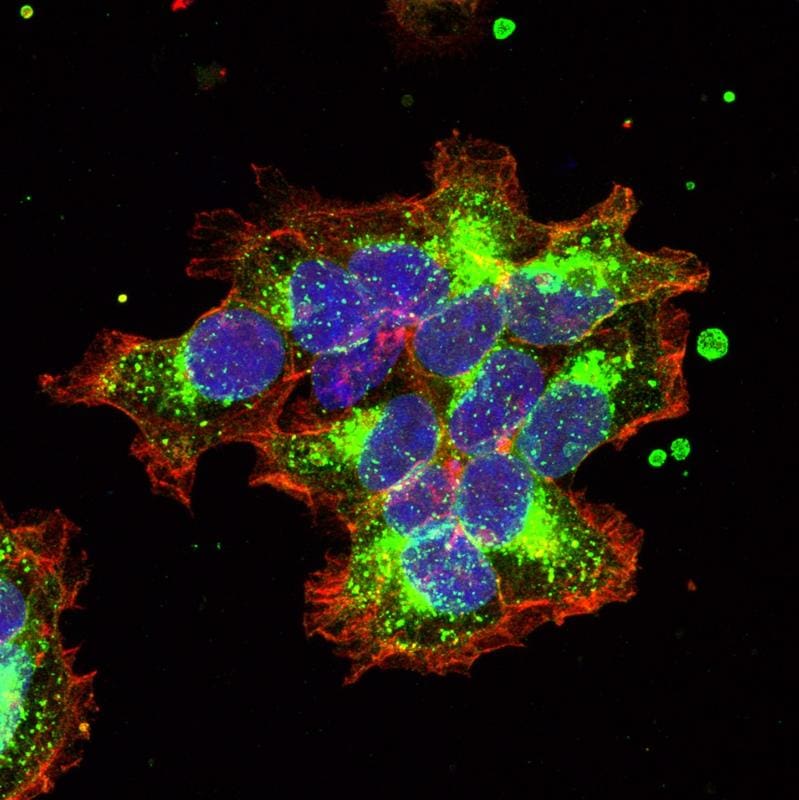Patented process from Vienna opens up new avenues in breast cancer research
Researchers at the University of Vienna have developed fluorescent peptide tracers that can specifically visualize the oxytocin receptor and activate it at the same time. This receptor, which is responsible for social bonds and hormonal processes, plays a central role in health and disease. The innovation enables precise imaging procedures and functional analyses in biological systems and holds high potential for the diagnosis and treatment of breast cancer. The tracers were recently patented and presented in the current issue of the journal Angewandte Chemie International Edition.
Oxytocin regulates a wide range of physiological processes, including labor pains, breastfeeding, and the formation of parent-child and pair bonds. As a neurotransmitter, it acts via the oxytocin receptor, a cell-surface protein that triggers signaling cascades inside the cell. Disturbances in this system, for example due to over- or underproduction of the receptor, are associated with diseases such as breast cancer or neurodevelopmental disorders such as autism.

The development of specific tools for the oxytocin receptor proved to be particularly challenging due to its similarity to other proteins. A team led by medicinal chemist Markus Muttenthaler from the University of Vienna, in cooperation with the Medical University of Vienna and the University of Queensland in Australia, succeeded in overcoming this. With the help of a patented linker technology, tracers were created that visualize the receptor and analyze its signaling pathways. This makes it possible to precisely map the distributions and functions of the receptor in tissues and organs.
The method could be a breakthrough, especially in breast cancer research, the most common cancer in women and one of the leading causes of cancer-related death. It opens up approaches for earlier detection and targeted therapies by shedding light on the involvement of the oxytocin receptor in tumor processes. In addition, the tracers enable studies of receptor distribution in the brain, which could advance research into disorders such as autism spectrum disorders and strengthen therapeutic strategies in the oxytocin system. The innovation thus sets new accents in basic research and clinical application.
Original Paper:
Monika Perisic BûÑhm, Predrag Kalaba, Rachel S. Gormal, Maja Zupanáiá, Alexandra Wolf, Mia Juraáiá, Thomas Kremsmayr, Frûˋdûˋric A. Meunier, Thierry Langer, Christian W. Gruber, Erik Keimpema, Markus Muttenthaler. Fluorescent peptide tracers for simultaneous oxytocin receptor activation and visualization. In Angewandte Chemie International Edition, 2025.
DOI: 10.1002/anie.202515180
The articles in the news section are produced by X-Press journalist office
Gender note. The personal designations used in this text always refer equally to female, male and diverse persons. Double/triple references and gendered designations are avoided in favor of better readability.




